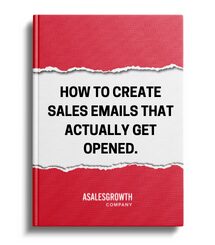In 2023, only 28% of sales professionals expected to hit quota. 62% of sales teams say their sales process needs work. LinkedIn “sales gurus” keep telling us that outbound is dead, cold email is dead, BDRs roles are in jeopardy. .
They’re not dead, the emails we send are just abysmal. They don’t stand out, they’re boring, they offer zero value, they’re not intriguing.
Intrigue is the Most Important Element of Cold Email
There’s a science behind this. When your prospect is intrigued by your subject line or preview text, their brain forces them to open it. Our minds are constantly observing our surroundings whether we’re aware of it or not.
Our brains are incredibly efficient at identifying patterns and cataloging our daily routines. The orbitalfrontal cortex (OFC) region does most of the heavy lifting here. The OFC builds a map of daily occurrences and trains our mind to recognize these occurrences as predictable.
These patterns are stored in the subconscious to free up our conscious mind from the mundane, redundant tasks or inputs, allowing more focus on the new, potentially important information. It’s basically automation, we automate the processing of routine, time consuming, tedious tasks. Thus, we’re free to spend the time and energy we have on more critical projects.
This efficiency is what kills sales emails. Our prospects have seen thousands of sales emails and they all look the same. Their brains have categorized certain phrases or structures and moved them to that subconscious section. They’ve been trained, by us, to ignore the monotony of sales emails and deemed them unworthy of attention.
Our emails are hitting the brain’s spam folders, unopened before they’re even seen. To capture attention, we need to find a way for the brain to break it’s normal processing patterns. Disrupt the expectations in a way that trigger the conscious mind to take over.
Disrupting Patterns
When information is presented that deviates from the norm, a trigger is sent to the anterior cingulate cortex (ACC). The ACC detects disturbances between expectation and reality. When we stumble into something unfamiliar or something our brain wasn’t expecting the ACC creates a signal called the “error-related negativity” signal – or, in simpler terms, the “oh shit” signal.
This “oh shit” signal pulls the brain out of autopilot and tells the brain to manually and consciously process the unexpected input. The information being received doesn’t make sense based on the established patterns. It can’t be ignored like other predictable inputs.
For email, tripping this “oh shit” alarm is the difference between being read or being tossed. When your messaging aligns with the expectations or predictable patterns, it’s filtered. But, when we present something unexpected, we force the readers conscious attention.
The Unexpected
Knowing that we need to create intrigue by presenting information that deviates from the expected, there’s a couple ways to attack it.
Surprise
Including surprising facts, figures, or examples contradictory to conventional wisdom could jolt the reader out of their email paralysis. This eBook opens with a series of facts, that while outlandish, are designed to make you pause for a moment.
Mystery
Posing unanswered questions and introducing the unknown is another way to capture a reader’s conscious attention. Mysteries exist wherever there are questions without obvious answers. When we’re presented with a statement or question that lacks an explanation we feel a need for closure. This need is what compels us to continue reading or search for answers.
Contrarian
Pushing back against common beliefs and making contrarian statement can disrupt patterns. For example “we’re discovered that sales organizations aren’t successful or unsuccessful based on the experience of their sales teams.” A statement that conflicts with conventional wisdom draws the reader in.
The Knowledge Gap
When there is a gap in our knowledge, there is a pain that won’t go away until we can fill that gap. We’re hardwired with a need to resolve information deficits. When we sense there’s something missing, there is tension that builds and compels us to seek out the information and provide ourselves with closure.
For account executives or business development reps, this means finding specialized information, data, or insights that your prospects are unaware of but need to understand. When you can identify and expose these gaps in their knowledge or awareness, you’re generating curiosity that they can’t or shouldn’t ignore.
Subject Lines
Your subject line is the first exposure to your pattern interrupt. Without piquing curiosity with it, any work on building intrigue in your email was wasted. Let’s say you’ve built on an email using the knowledge gap approach. Your email highlights a new government mandate in your prospect’s industry that could significantly impact a part of their business if they’re unaware. I’d use something like this:
“New Federal Mandate Costing [Industry] Companies Millions”
If your prospect is responsible for their company’s compliance and finances, they must open that email. You’ve exposed a potential knowledge gap and positioned yourself as the keeper of that information. Be creative and push the envelope. Your subject line must stand out from the rest of the inbox but also trigger the “I can’t ignore this” reaction.
Closing
Our prospects are inundated with emails. Breaking through the noise is the greatest skill of an AE or BDR. The influx of bland, formulaic, repetitive sales emails have trained our brains to ignore anything that seems “salesy”.
Incorporating elements of surprise, creating knowledge gaps, and posing compelling mysteries can trigger our prospect’s “oh shit” reactions. The science shows that when our patterns and expectations are interrupted our conscious mind must interact with the unanticipated information.
If you want to learn more about the scientific principles and frameworks for writing emails that get opened, check out the full Learn to Create Emails that Actually Get Opened eBook.





0 Comments